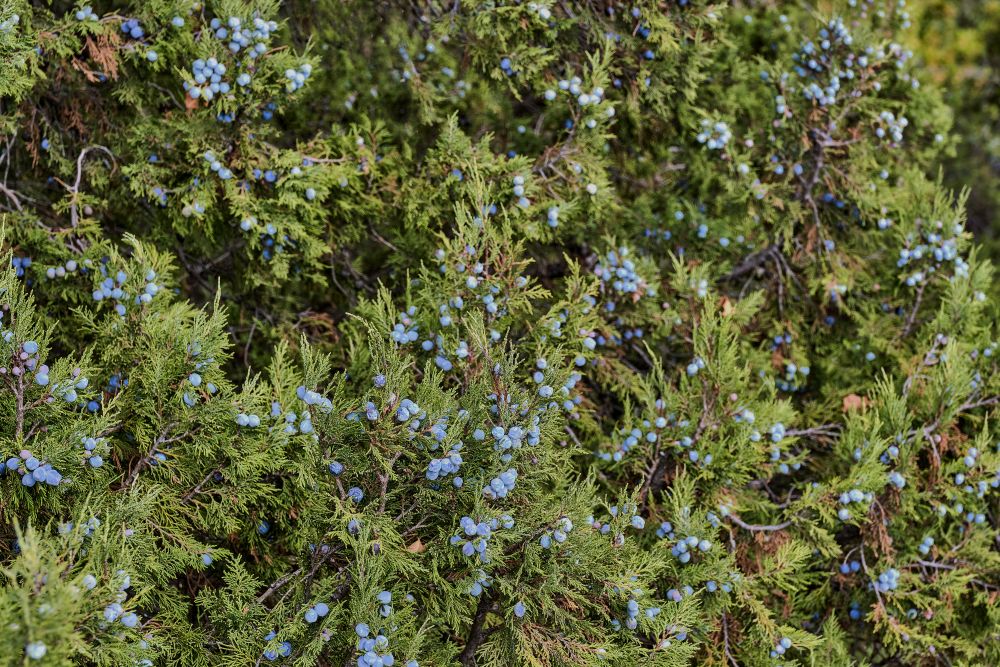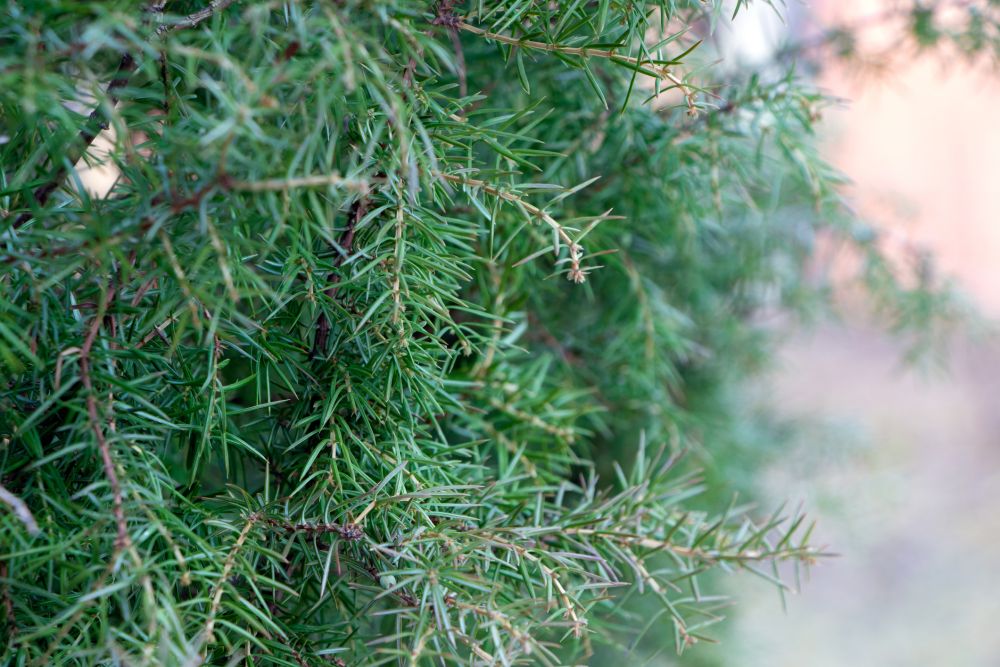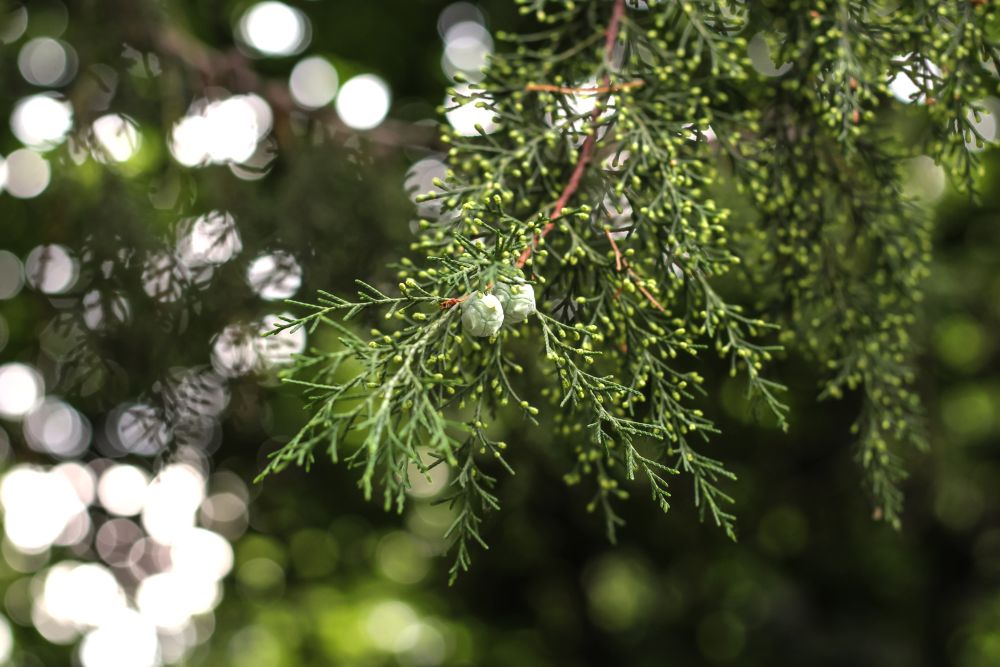Juniper Growing Problems – Troubleshooting Common Juniper Issues
People prefer juniper as it offers many ornamental and functional options in the garden and landscape. Add to that the many juniper varieties out there. From Japanese juniper and blue star juniper to Wichita blue juniper and Spartan juniper, each variety has its distinct visual aspects. But as many as their benefits are, so are their problems.
From fighting off diseases to choosing the right companion plants and picking the juniper berries safely, there’s a lot to worry about when it comes to growing a juniper in your garden. This guide walks you through the most common juniper issues and how to deal with each one safely and effectively.
Juniper Twig Blight Disease
We start off with a very common juniper disease that affects the majority of juniper varieties. It’s the twig blight disease and as the name implies it affects the twigs of junipers. It starts early in the spring just around the time the first leaves and shoots emerge.
Juniper twig blight is a fungal infection and an array of fungal spores are responsible for it. The most common three fungi are Phomopsis, Scllerophoma pythiophila, and Kabatina. And they’re more prevalent than previously thought. So if you have juniper bushes or juniper trees growing in your garden, chances are they’ll get twig blight in the early spring.
The symptoms start with the tips of the new shoots and leaves turning light green then morphing into gray. Eventually, the infection swallows up the whole branch and kills all new growth on the juniper.
How to Fix it
Since the fungal spores are transmitted by insects as much as contaminated gardening tools, then the first step to prevent twig blight is to keep your garden clean. Insects are often attracted to rotten leaves and twigs on the garden floor. Here are a few easy steps to help you manage and control this disease.
- Remove all debris and fallen leaves which might harbor the fungal spores throughout the winter.
- Use clean and sterilized gardening tools. This especially applies to the pruning shears when pruning the juniper.
- Remove any infected twigs and leaves with clean tools. Sterilize the tools after you’re done with them.
- Spray the juniper in the early spring before the first signs of growth with a suitable fungicide.
- Apply the fungicide throughout the growing season. For best results, you can spray the juniper once every 4 to 6 weeks.
Juniper Companion Plants
Although junipers are easy to grow and care for, apart from the twig blight we just covered, many people are faced with the dilemma of pairing juniper with other plants. The good news is, it’s easy to find many companion plants for juniper considering that there are over 170 juniper species in circulation.
But it’s not just about finding plants that play nice around juniper without competing over garden real estate and resources. You also need to match it with plants of the same height and color hues. And if you’re growing junipers along hedges and boundaries, then the question is what type of tree will do well among the juniper bushes.
Finally, you’d want to look for plants that grow in the same soil and flourish in the same growing conditions as juniper.
How to Fix it
To find the right juniper companion plants, you first need to understand the specific requirements of juniper bushes in terms of soil and sun. For starters, well-drained soil is a necessity that fits a whole litany of plant profiles as well. But since juniper is more drought-resistant, then you need to find specific plants that share this same quality as well. Otherwise, you’ll stress out the juniper with overly wet soil or put the companion plant through distress because of the dry soil.
Most junipers will do well and look even better when paired with plants with bluish hues or blue flowers. Bamboos are another option since they’re almost as hardy as junipers and they blossom in the same growing conditions as well. As long as the plant is a perennial and has a high tolerance for drought, it’s a good candidate to grow alongside junipers.
Upright Juniper Pruning
Of all the juniper care you’ll do throughout the perennial plant’s life, pruning will probably take up most of your time. And if you’re growing upright junipers, then pruning can be more than a task. It becomes a necessity. That’s because you’re not just managing the growth of the bush and keeping it under control. You’re also designing the juniper as you go along. Every trim has to fit within your design. If you trim the twigs and branches too much, the juniper will look awry. Cutting back if done with excess can also impact the growth and health of the plant. So when should you start pruning your upright juniper and what are the best times and frequency of this crucial maintenance process?
How to Fix it
Most experts recommend you start your pruning and training of the upright juniper as early as possible. Not only will that give you good practice, but it will give the juniper its shape early on. This allows the plant to grow and maintain that shape for many years. Compare that with trying to train a mature juniper and you can see why it pays to start early. So how do you prune your upright juniper?
As with other perennials, you need to get rid of dead or damaged branches. Entwined twigs can spell trouble down the line, so you need to untangle them. Next, take a closer look at the interior branches of the juniper. They spend most of the time in the shade and that can promote diseases. So thin them out considerably to improve the air circulation around and within the juniper. Finally, give the juniper a few snips here and there to maintain the design and shape you have trained it to.
Juniper Berry Harvest
If you’re new to junipers of all varieties, you might be wondering what is there to harvest from these perennials. But the truth is, junipers produce berries which you can collect when they’re mature. And the operative word here is maturity. While juniper berries are relatively easy to pick, it can be tricky to know when exactly the harvesting time is.
First off, not all juniper berries are safe for consumption (more on that later). Out of the 170 juniper species you can grow in your garden, only 40 junipers produce edible berries. That said, make sure that your specific juniper variety falls under that safe to eat juniper category. Now, how do you know that the juniper berries are ripe and ready to harvest?
How to Fix it
The main thing you need to know about juniper berries is that the unripe ones are bitter and quite inedible. Luckily, the mature berry has many telltale signs that indicate its level of ripeness. Ripe berries are usually blue and the skin is covered with a powdery substance. In that way, they’re similar to blueberries. But unlike blueberries, the skin of the juniper berry will be a little wrinkled and soft to the touch.
The berries all become ripe almost together in the fall. You’ll need to act fast and harvest them before birds have their way with them. But that’s not the only hurdle you have to contend with. The leaves of juniper have notoriously sharp edges and when they make contact with the bare skin, scratches and rashes are a common occurrence. So use thick gloves to protect your hands and arms when picking the ripe juniper berries.
Juniper Berry Safety
Before we consider juniper berry safety, it’s worth noting that these conifer berries have been the main flavoring of gin since the 17th century. So if you had a gin and tonic before, then you’ve consumed juniper berries. And you go Dutch gin makers to thank for that since they were the first to use it to distill gin. Juniper berry is a popular flavoring of many wines and even mead.
That aside, the question remains, how safe are the juniper berries you see glowing purplish on your juniper bushes and trees?
How to Fix it
As we mentioned, only 40 juniper berries are safe to eat. This safe juniper list includes Juniperus deppeana, Juniperus drupacea, Juniperus californica, and Juniperus phoenicea. And to be on the safe side, you should grow the Juniperus communis variety since it’s been used as liquor and wine flavoring for centuries.
But even if your juniper is one of those species, you still cannot just pick a handful of ripe berries and consume them on the spot. For one thing, the juniper berries are not that sweet. They have a gritty and almost spicy taste so a few berries at a time are the recommended dosage.
If you’re out in the woods foraging, think twice before you put a few ripe juniper berries in your mouth. Even if they belong to the safe list, the berries might be contaminated with chemicals which renders them unsafe to consume.
Juniper Pollen Hazards
One last juniper problem that many people have to contend with is the pollen hazard. This problem is most apparent if you’re growing Juniperus ashei otherwise known as mountain cedar. As an evergreen perennial, the stunted juniper serves both as a bush or a tree depending on how you look at it.
Juniper pollen allergy is a serious problem and it can cause all kinds of health hazards from difficulty breathing to critical respiratory conditions. Cedar fever is the common name for the various allergies that juniper pollen causes. In some cases, people have to seek immediate medical help and are told to avoid areas where cedar mountains grow. But since the pollen is carried by the wind, it’s not always easy to follow that advice.
How to Fix it
Cedar mountains come in two genders, male and female. While the female junipers produce berries, the male variety produces pollen that fertilizes the female flowers. So the easiest way to prevent juniper pollen from filling the air in your garden is to plant female junipers.
But what happens if you detect a male juniper tree a few houses down the street? Again you don’t have to worry about it, except during rainy seasons. That’s when the top of the cedar mountain trees shed their pollen in abundance. The pollen cones usually appear in the mid-winter and wait for the wind to carry them everywhere. So that’s the best time to take precautions until the pollen has cleared the area.


